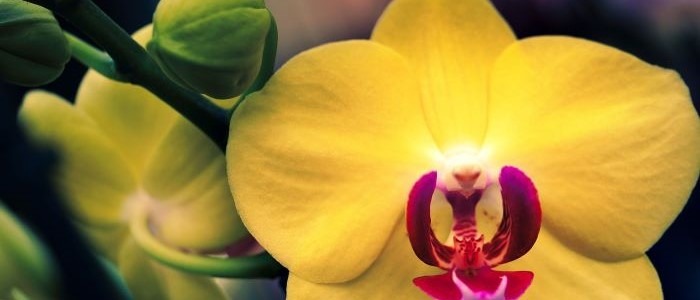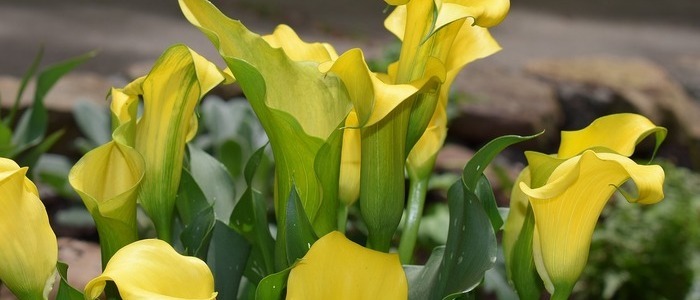Are you looking for a yellow houseplant with a rich history? Well, you have come to the right place. Here you’ll learn the history of yellow Chrysanthemums and their cultural significance. Chrysanthemums originated in China around the 15th century B.C. and were used as herbs.
Later, they spread to Japan and were used as graveyard decorations. Since the colonial era, this plant has grown in popularity in Europe and North America. In Australia, it is considered the “Queen of the Fall.”
Although native to China, this flower was introduced to other countries as a popular ornamental plant. It is now cultivated and grown throughout many temperate regions of the world. Chrysanthemums have both ornamental and nutritional value. So if you’re looking for an unusual flower for your home, consider growing this perennial on your sill or flower bed!
Chrysanthemum Frequently Asked Questions
What houseplant has yellow flowers?
Chrysanthemums, also known as mums, are flowering plants of the daisy family. These brightly colored ornamental flowers are really outdoor plants however they can also be grown as house plants.
Why is the chrysanthemum the flower of death?
The chrysanthemum became known as the flower of death because they were used as graveyard decorations. Since the colonial era, this plant has grown in popularity in Europe, and North America. In Australia, it is considered the “Queen of the Fall.”

How to Care For the Yellow Chrysanthemum Flower
If you’re wondering how to care for the Yellow Chrysanthemum flower, you’ve come to the right place. Some types of chrysanthemums can be grown from seed, but most are propagated through cuttings or clumps.
In addition to maintaining healthy soil, Chrysanthemums need bright indirect sunlight and a consistent supply of water and air. In general, they prefer bright, sunny locations, and can thrive in gardens anywhere in the world. In addition to being attractive, Chrysanthemums have numerous health benefits. They require a light fertilizer and consistent watering.
Chrysanthemums should be fertilized several times a year. If you plant them in the fall, wait until spring to fertilize. Fertilizing in the fall can weaken their winter hardiness. If you’re unsure whether your Chrysanthemums are ready for the cold, mulch your plants as much as you can before winter. Mulch helps keep roots warm and protects them from diseases and pests.
How to Propagate the Yellow Chrysanthemum Flower
There are a few easy ways to propagate the Yellow Chrysanthemum flower. Using a seed tray, simply cut the stems in half or thirds and plant the newly split parts in a sunny spot. Chrysanthemums are hardy and pest-free, but they should be planted in well-drained soil.
Generally, they are propagated from cuttings. If you are not sure what kind of cutting you need, you can order a plant online or from a catalog. The yellow Chrysanthemum Flower can be grown from cuttings. If you’ve chosen to use a cutting, you can use the stems as seedlings.
If you prefer not to use a flowering chrysanthemum, you can divide it instead. You should take basal stem cuttings in spring when it is about six centimetres high. Before taking a cutting, water the parent plant well the day before. Then, cut the stem so that the top part is trimmed to a clean straight line. Finally, place the cut stem into a pre-watered cutting compost.
How to Prune the Yellow Chrysanthemum Flower
To grow the yellow chrysanthemum in your garden, you should follow these tips. First, ensure that the soil is well-drained. This will ensure that your chrysanthemum is well-watered, and you won’t have to worry about winter kill. Make sure you level any depressions to ensure the drained soil is evenly moist.
Secondly, check for pests and diseases. Some chrysanthemums are susceptible to aphids, which are small pear-shaped sucking insects that infest garden mums. They tend to collect on stem tips and buds, and you should inspect them regularly for signs of aphid infestation. In some cases, you may even find “plant lice” on your chrysanthemum plant.
The first chrysanthemum was cultivated in ancient China. Since then, it has evolved into a variety of colors, shapes, and styles. The royal horticultural society recognized over 140 chrysanthemum cultivars in 2017. Despite their popularity, chrysanthemums can be planted in any garden, and the best part is that they grow very well in pots and containers.
Another important part of chrysanthemum care is snaring the stems. You should snip off stems at the right time and at the correct stage. A chrysanthemum’s buds should be just beginning to open, so the stems are in an in-between stage. And if they are not in the process of opening, they will likely turn yellow prematurely.
Treating Common Problems in Chrysanthemums
In addition to proper nutrient levels, the yellow chrysanthemum flower also needs plenty of sunlight to produce its best blooms. However, it can tolerate some shade, too. A plant that doesn’t receive enough sunlight will wilt and turn brown. It needs at least six hours of sun every day to thrive. Here are some ways to treat common problems in your chrysanthemums.
The symptoms of chrysanthemum blight vary depending on the cause, but they all result in a brown spot on the upper surface of the leaves. The centre of the flower may also turn brown. If the plant is suffering from blight, spores may be produced. The affected plant is often cut back to half its height by the time it flowers.
Poor soil is the most common cause of chrysanthemum fungus, which affects the plant’s foliage. Poor soil can harbor soil-borne diseases and lead to winter-killed. Make sure the soil is well-drained to prevent fungus from overwintering. To avoid the fungus, you can apply a fungicide.
They may be susceptible to white rust, a fungal infection that appears as white blisters on the stem and underside of leaves. To prevent ray specks, you must keep the stems and leaves in a warm, frost-free area. Although chrysanthemums are late-flowering species, they are susceptible to a variety of fungal diseases. White rust affects the leaves in late summer, especially the undersides of the petals. Brown rust is less of a problem.
Yellow Houseplants Other Than Chrysanthemums













